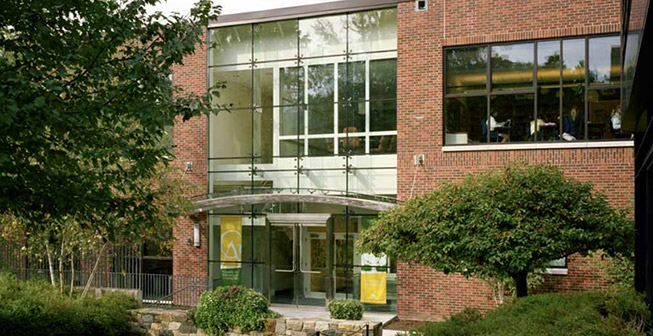GREENWICH, CT – The Greenwich Academy Middle School has been awarded LEED Silver certification under the United States Green Building Council’s Leadership in Energy and Environmental Design for Schools program. A team from James G. Rogers Architects, formerly the Connecticut office of Butler Rogers Baskett Architects, led the design effort in renovating the school.
The building became the first in New England to receive a LEED for Schools rating, and the tenth nationally since the program started in 2007. Additionally, it is one of three school buildings in Connecticut to achieve LEED Silver— one of the others being the Stevens Building at New Canaan Country School, also designed by the JGRA team.
Renovation of the Middle School called for new meeting rooms and classrooms, air-conditioning, locker space, wider corridors, and upgrades to lighting and technology. “The Board wanted an efficient, economical building,” remarks Lauren Bedell, the school’s Assistant Head for Finance and Operations. “Getting LEED certification wasn’t a goal but a result. Every time we had an option, we considered if there was something we could do for the better.”
However, obtaining LEED certification presented certain obstacles as well. LEED for Schools certification requirements are more stringent that those for LEED New Construction in specific categories. Steven Law, AIA, project manager, explains, “The acoustic prerequisite and its strict limitations on noise 4 North Main Street, South Norwalk, CT 06854 T 203 354 5200 F 203 354 5201 jgr-architects.com levels are very rigorous. Meeting the demands for acoustic levels requires thoughtful design of the mechanical systems, as well as attention to all the environmental and envelope parameters for the core learning spaces.” Our
team worked closely with engineers and other consultants to integrate building management control systems into the design. Of particular note is the 27.6kW solar photovoltaic panel array on the roof of the school, which will reduce the building’s total energy costs by 11 percent.
Other sustainable design features include water-conserving plumbing fixtures, landscaping with native and adaptive plant species, daylight harvesting lighting controls, and materials with a high recycled content. Construction was completed without interrupting the school’s use of the building, thus avoiding use of temporary classrooms and further reducing the amount of waste generated by the project. “It has been tremendously rewarding finding new ways to understand our built environment and its relationship with
the natural world,” states Jim Rogers, FAIA, founder of JGRA.
Since the completion of construction in 2007, the School has embraced its environmentally sensitive design features. “Guided by our motto, ‘Toward the Building of Character,’ Greenwich Academy is committed to practicing responsible environmental stewardship and educating future leaders,” comments Molly H. King, Head of School. “The GA curriculum is grounded in teaching students about the natural world and their relationship to it.” Information about the building’s energy efficiency and environmental benefits is on display in the lobby entrance to the school. Further information on the Middle School’s energy efficiency can be viewed on Greenwich Academy’s website under GreenSpace.

